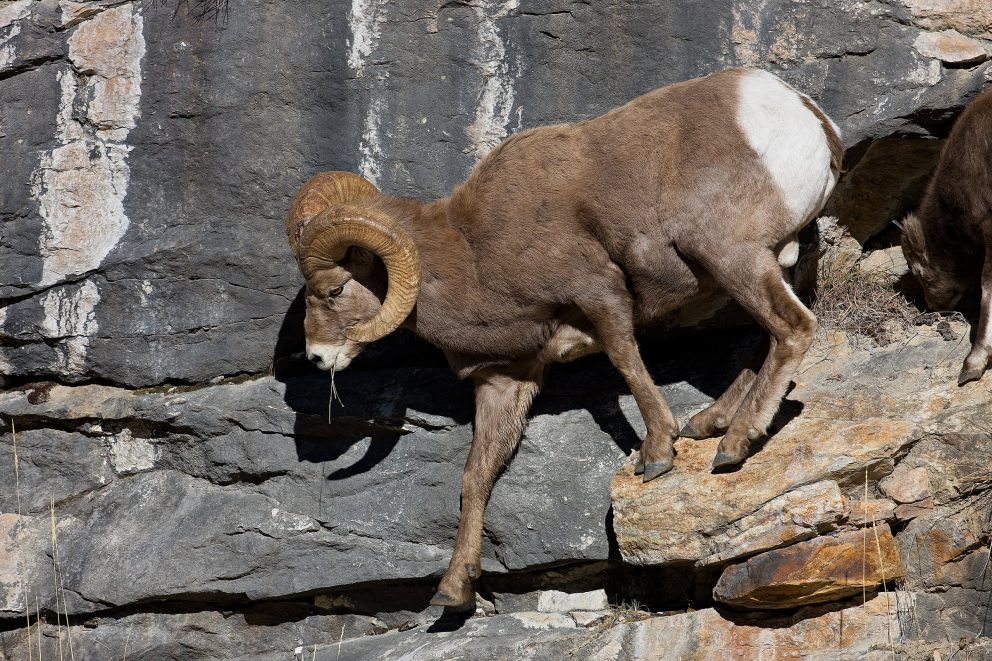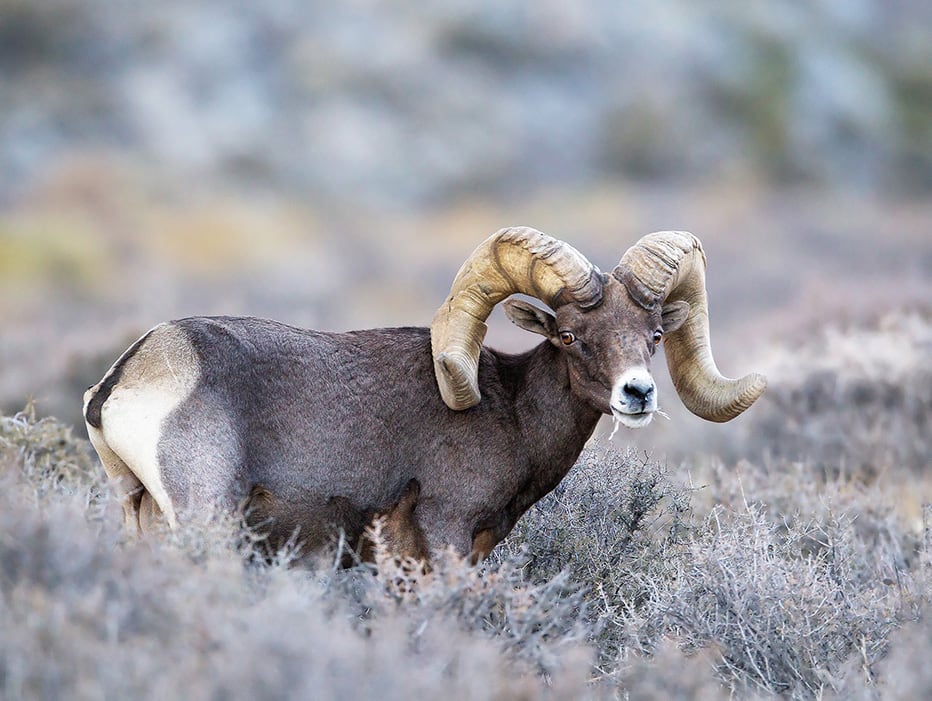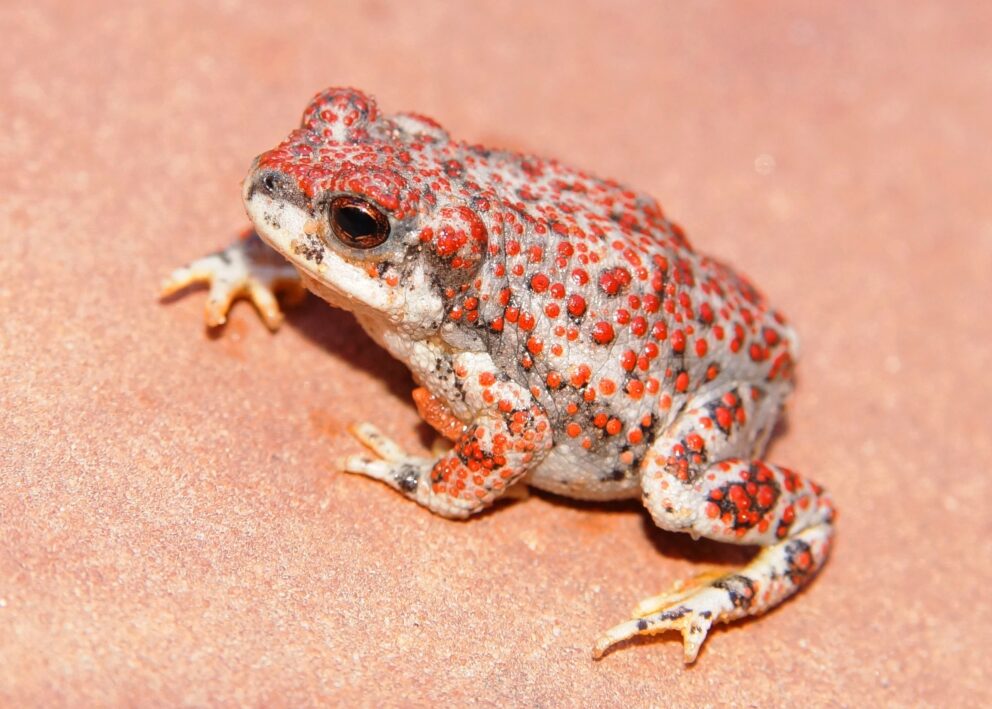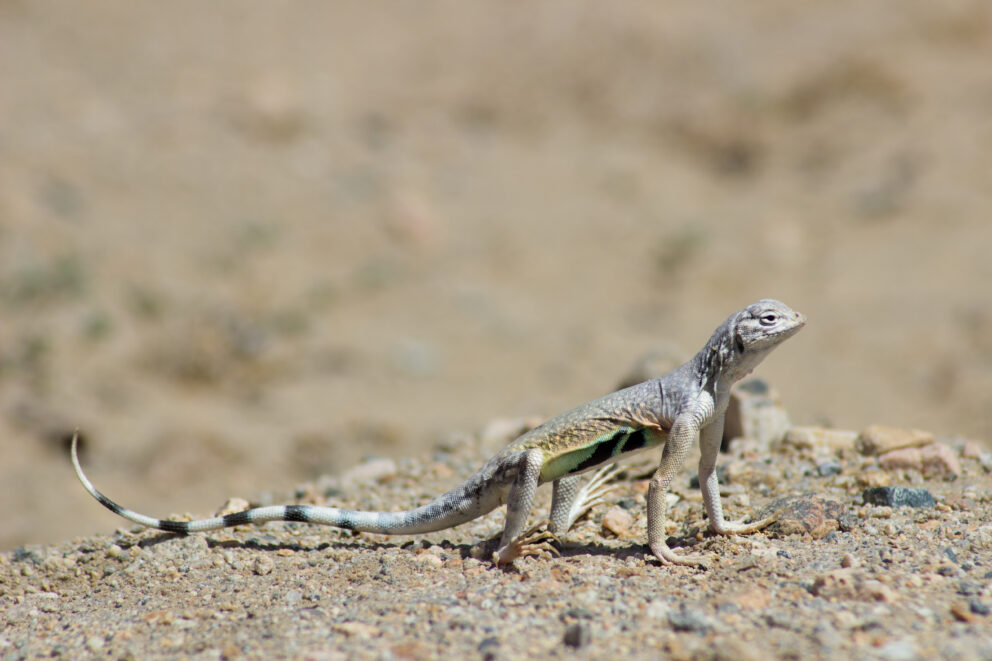- SCIENTIFIC NAME
- Ovis canadensis nelsoni
- CLASSIFICATION
- Mammal
- LIFE SPAN
- 6-8 Years
- SIZE
- 60-71” | 90-180lbs
- STATE CONSERVATION STATUS
-
- Priority Species
- FEDERAL CONSERVATION STATUS
- Least Concern
- GAME STATUS
- Game
- GAME TYPE
- Big Game
- Washoe
- Humboldt
- Pershing
- Churchill
- Mineral
- Lyon
- Douglas
- Carson City
- Storey
- Elko
- Lander
- Eureka
- White Pine
- Esmeralda
- Nye
- Lincoln
- Clark
Habitat & Range
This species of Bighorn Sheep prefers the rough and rocky habitat of mountains in Southern Nevada. Steep rocks offer protection against predators, who are unable to navigate and climb up after the bighorn sheep. Although residents of deserts, they do require freestanding water to help them get through the hot summers.
- Alpine and Tundra
- Cliffs and Canyons
- Desert Washes
Threats
- Disease
- Habitat Fragmentation
Natural History
Desert Bighorn Sheep are herbivores whose diet consists of mostly grasses but also includes shrubs, cacti, acacia, and forbs. Their diet depends on their geographic location and availability of vegetation. In the warmer months, they graze on mountain slopes. During the colder months, they move down to the valleys. Mating season, called the “rut,” occurs in the fall when rams (male sheep) will compete to mate with females. Later in the season, rams will join females and female groups. In the winter, bands of ewes (female bighorn sheep) may join together and form large groups of up to 100 sheep.
Fun Facts














